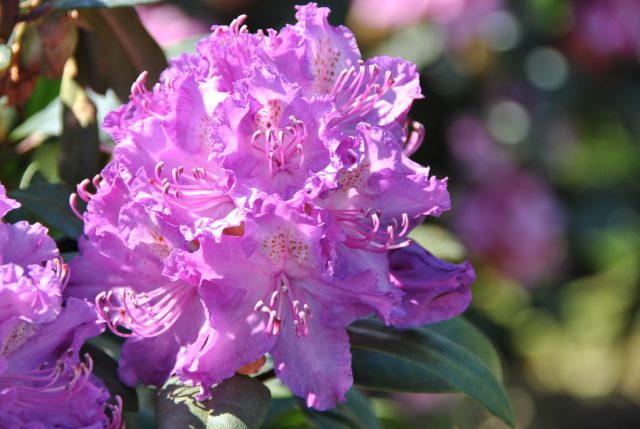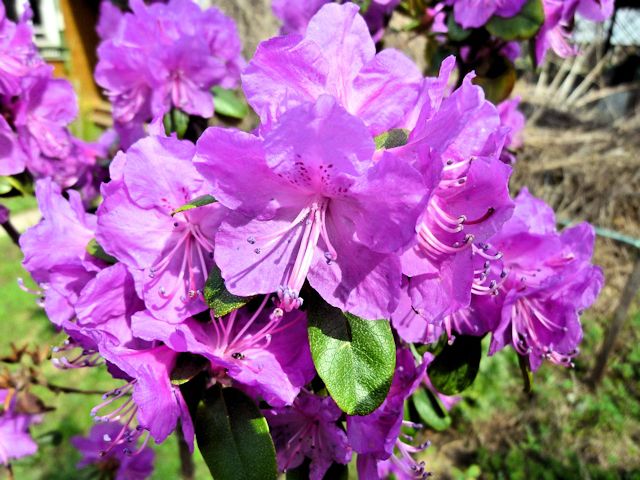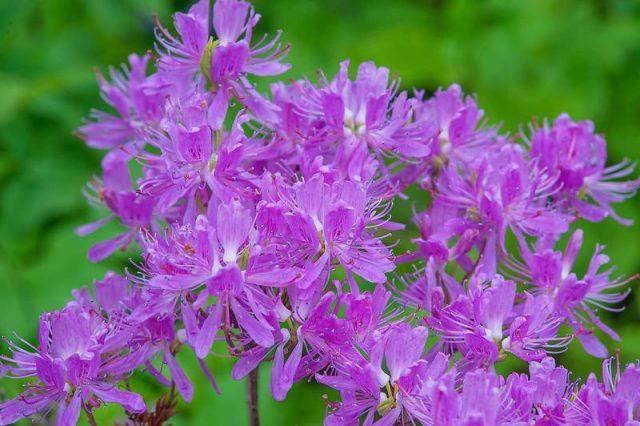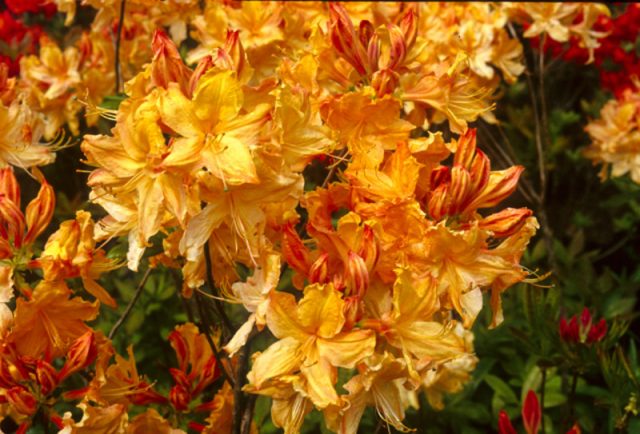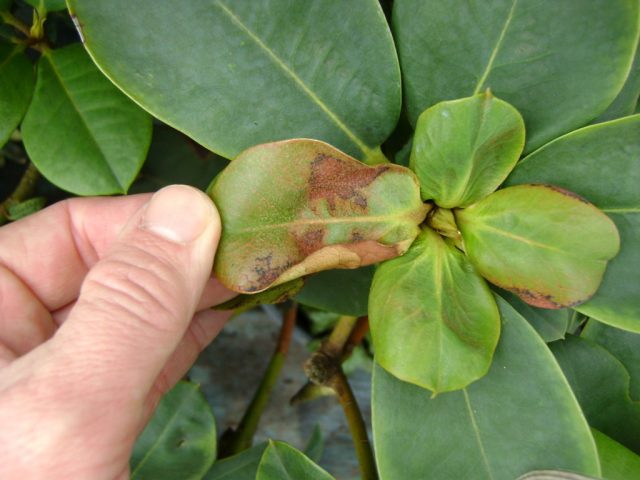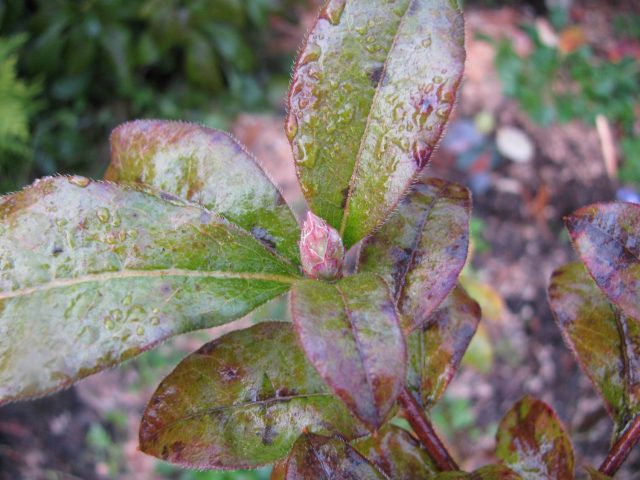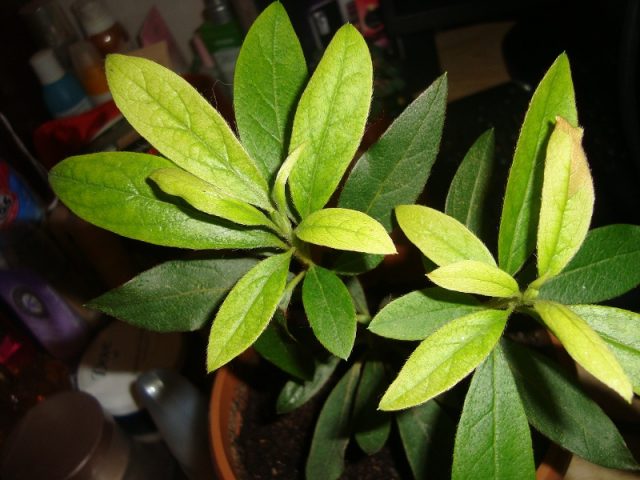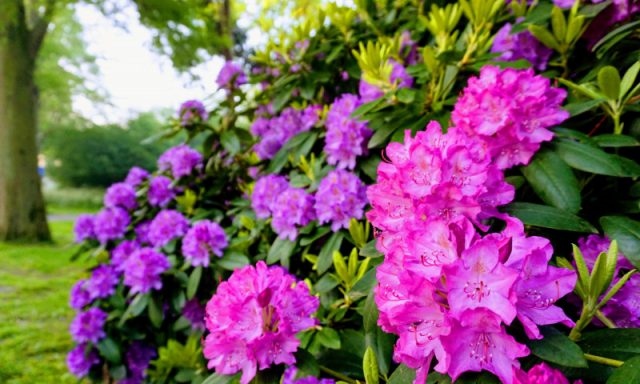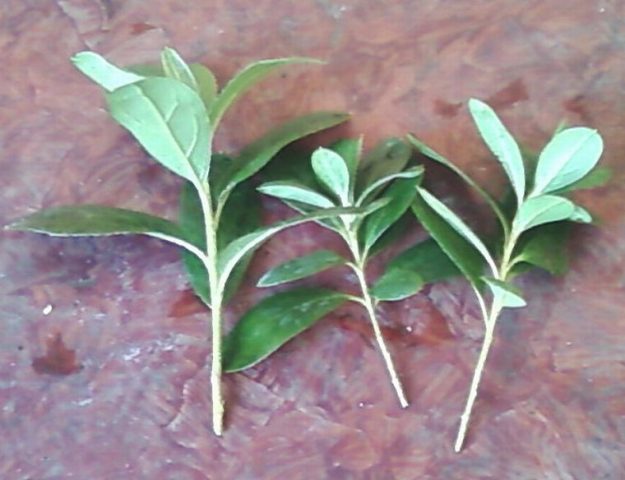Content
Planting and caring for rhododendron in Siberia is of interest to many summer residents and gardeners living in a harsh climate. It is generally believed that rhododendron is not suitable for growing in a strip with cold winters, but in fact this is not at all the case.
Does rhododendron grow in Siberia
The rhododendron plant is a small shrub of the deciduous, evergreen or semi-deciduous type of the Heather family and has over 600 species in its genus. By default, it is generally accepted that beautiful rhododendrons are poorly suited for growing in regions with a harsh continental climate and prefer warmer and more humid places.
In fact, rhododendron in Siberia can be grown with great success. The plant requires little more care than any other ornamental shrub. And most importantly, there are many cold-resistant varieties of rhododendron that can easily tolerate even very harsh and long Siberian winters.
Rhododendron varieties for Siberia
Winter-hardy rhododendrons for Siberia can be found in many varieties, among them there are deciduous and evergreen varieties, shrubs with lilac, purple and yellow flowering. A variety of varieties allows you to choose truly beautiful and harmonious rhododendrons for a garden in Siberia and it is interesting to design a site.
Daurian rhododendron
Daurian rhododendron is a deciduous shrub that can reach 1 m in height. The leaves of the plant are oblong and tough, the flowers are large, purple, white or pink. The variety blooms twice a year, in early spring, even before the leaves appear on the branches of the shrub, and closer to autumn, from August to September.
For Siberia, the Daurian variety is ideal, since it has increased frost resistance and can withstand winters with temperatures up to -34 ° C.
Rhododendron Ledebour
Another semi-evergreen variety suitable for cultivation in the harsh climate of Siberia. Rhododendron can grow up to 2 m in height, has a dense crown and branches directed upwards, olive-green oblong leaves.
The flowering of the variety occurs between April and May, sometimes in August or September, the shrub blooms again. In the photo of a rhododendron in Siberia, you can see that the flowers of the Ledebour variety are large, pale lilac in color.
Rhododendron, which partially sheds its leaves in winter, withstands the severe frosts of Siberia. With proper care, a drop in temperature to - 30 ° C and below it tolerates calmly.
Canadian rhododendron
The ornamental shrub Canadian rhododendron belongs to compact varieties, it rarely grows more than 1 m in height.The leaves of the variety are small, green with a slight bluish tint, the flowers are small, only about 2.5 cm in diameter, can have white, lilac, pink or magenta. In this case, the flowers are usually collected in inflorescences, so they seem much larger.
The variety blooms in the spring before the foliage appears; in time, flowering lasts about a month.The frost resistance of the plant is very high - the variety can withstand cold temperatures down to -32 ° C and even up to -40 ° C, although in extreme frosts in Siberia, the buds and tops of the shoots can freeze.
Rhododendron Schlippenbach
Schlippenbach's rhododendron is a frost-resistant deciduous shrub that can grow up to 2 m in height. The leaves of the plant are dark green and ovoid, the flowers are pale pink with purple spots in the middle. Individual flowers reach 8 cm in diameter, gather in inflorescences during flowering.
The flowering of Schlippenbach's rhododendron occurs in May, and for the first time this variety blooms only at 6-8 years of age. The plant transforms very beautifully in the fall, before falling off, its leaves change color to bright red or deep crimson.
The variety is considered one of the most beautiful, and it is doubly pleasant that it is well suited for growing in Siberia. The frost resistance of the variety allows it to withstand prolonged frosts down to - 25-30 ° C and strong freezing of the soil. With basic care and shelter for the winter, Schlippenbach's rhododendron retains good health in the climate of Siberia and pleases with beautiful flowering.
Rhododendron Golden Lights
A very beautiful frost-resistant plant variety - Golden Lights, capable of growing up to 2 m in height and having a wide and dense crown up to 1.5 m in diameter. The leaves of the plant are elongated and rather large - up to 10 cm in length and 6 cm in width. Shortly before the leaves fall in autumn, the Golden Lights rhododendron acquires a rich crimson color, which makes it very decorative.
The bush blooms in mid-May - the Golden Lights rhododendron produces medium-sized bright orange flowers with a slight pinkish tinge. Flowers are collected in inflorescences of 8-10 pieces, noticeably contrasting with the olive-green foliage of the plant.
Golden Lights feels completely comfortable in the climate of Siberia. The shrub is able to tolerate frosts below -40 ° C, although it must be covered for the winter in order to prevent excessive freezing of the roots.
How to grow rhododendron in Siberia
Growing and caring for rhododendron in Siberia is not particularly difficult. When breeding this beautiful shrub, certain rules must be followed, however, in general, any gardener can safely plant one of the frost-resistant varieties on his site and enjoy bright flowering every year.
Landing dates
In warm and temperate climates, the rhododendron tolerates not only spring, but also autumn planting. However, Siberia has its own peculiarities - the first frosts start here very early, sometimes winter comes already at the end of September.
Therefore, it is recommended to plant a bush in Siberia only in the spring, in which case the shrub will have time to take root properly. When planting in the ground in autumn, even frost-resistant varieties can receive great damage during the first frosts, which will lead to inevitable death.
Landing site preparation
Rhododendron is not too picky about lighting and soil, but some features of the shrub must be taken into account. In particular:
- for planting a plant in Siberia, it is recommended to choose places that are bright, but protected from direct sunlight;
- the soil for rhododendron should be loose, with good aeration and an increased level of soil acidity;
- it is better not to plant rhododendron in an area in the immediate vicinity of which groundwater passes, the shrub does not tolerate swampy soil and may die;
- the shoots of the rhododendron are flexible, but rather thin, so it is better to plant the plant under the cover of some wall, fence or higher plants, otherwise a strong wind can break the branches of the bush.
If the site does not fully meet the requirements of the rhododendron, it can be additionally prepared - mix equal amounts of sand and peat, add dry needles and crushed pine bark and replace the ground at the site of the rhododendron planting with such artificial soil. At the bottom of the dug planting hole, it is necessary to lay a dense layer of drainage - a layer of at least 20 cm. It is recommended to fill the hole with complex mineral fertilizers, they will help the plant to take root faster and contribute to its healthy growth during the first years.
Landing rules
In open ground, rhododendron in Siberia is planted according to the standard scheme, which looks like this:
- in the selected area, a hole is dug about 0.5 m deep and up to 0.7 m wide;
- drainage is poured onto the bottom of the hole, and then 2/3 the hole is filled with prepared soil from peat, sand, needles and crushed bark;
- the rhododendron seedling is carefully lowered into the hole and its roots are sprinkled to the surface of the earth.
Immediately after planting, the rhododendron is watered abundantly, and then the soil around the shrub is mulched with a dense layer of needles or bark. At the same time, the mulch should not fall into the place where the rhododendron bush branches out - this will harm the seedling and can provoke its death. The mulch layer should only cover the soil around the shrub, in which case it will prevent moisture evaporation and weed growth.
Watering and feeding
Despite the fact that the rhododendron is sensitive to waterlogging of the soil and can die from stagnant moisture, the plant also reacts negatively to drought. Rhododendron in Siberia needs to be watered regularly, especially in the spring, during the budding and flowering period, and in the summer, during the driest months.
The frequency of watering is determined individually - the fact that the plant needs moisture is evidenced by the slight drooping of the leaves and the disappearance of the glossy shine on their surface. However, in the midst of the summer heat in Siberia, it is worth prophylactically pouring 10 liters of water under the bush every week, in which case the rhododendron will definitely not dry out. It is also recommended to spray the crown of the plant once every couple of days.
As for feeding a plant in Siberia, the first 2-3 years it has enough fertilizers applied to the soil during planting. At the beginning of spring, you can add a little citric acid diluted with water to the soil - this will raise the acidity level.
An adult rhododendron is fed more often, several times per season. In March, it is recommended to apply fertilizers containing nitrogen to the soil, and in the summer and until the beginning of autumn, feed the shrub with superphosphate and potassium sulfate. Such procedures will make the flowering of the shrub in Siberia more lush and generally strengthen its vitality.
But lime and chloride fertilizers, like manure or bird droppings, should not be used for rhododendron, they alkalize the soil, which harms the shrub.
Pruning
Sanitary pruning is required annually for rhododendrons in Siberia and aims to remove any dried, broken, or diseased bush branches. If such prevention is not carried out, the plant's immunity will noticeably fall, and the risk of getting a fungal or viral disease will increase.
As for the decorative pruning of the crown, it is usually carried out no more than once every 3 years. Any haircut injures the plant a little, and since the natural forms of the bush are correct and aesthetic, it should not be stressed unnecessarily.
When decorative pruning rhododendron, the following rules are followed:
- the procedure is carried out in the spring until early April, until the buds begin to swell on the branches of the rhododendron;
- the shoots are cut about 1 cm above the growing point, which looks like a slight pinkish thickening on the branch;
- all cut sites are treated with garden varnish or other antiseptic solutions - in order to avoid infection.
After decorative pruning during the period of bud swelling and flowering, the rhododendron in Siberia must be watched especially carefully. Particular attention should be paid to regular watering and high-quality feeding.
Protection against diseases and pests
Despite its hardiness and resistance to cold, rhododendron in Siberia remains susceptible to fungal diseases. Especially dangerous for shrubs are:
- rust - an ailment that manifests itself as bright orange spots on the leaves of the plant;
- leaf spot - the disease is expressed in the appearance of brown spots on the leaves of the rhododendron;
- chlorosis - with this disease, young shoots and leaves turn yellow and fade;
- bacterial cancer - the disease affects the root system of the plant and leads to its death.
Most often, shrub diseases in Siberia arise due to the insufficient presence of oxygen in the soil, as well as due to waterlogging and poor sanitary condition of the soil. In order to treat rhododendron, high-quality sanitary pruning is carried out, during which all damaged parts of the plant are removed, and the shrub is treated with fungicides and copper sulfate. As a preventive measure, it is necessary to clear the soil of weeds and fallen leaves in time, annually carry out a sanitary shearing of the bushes and monitor the level of soil moisture.
In addition to fungal ailments, the plant is often affected by pests - weevils, scale insects, spider mites and other insects. To get rid of pests and prevent their further appearance, in spring and autumn shrubs in Siberia need to be treated with insecticides and Bordeaux liquid, paying attention not only to the crown, but also to the soil at the roots.
How to cover a rhododendron for the winter in Siberia
For frost-resistant varieties of plants, heavy snowfalls and strong winds are more dangerous than cold itself. Therefore, the main task of the gardener when preparing for winter is to make sure that the thin branches of the bush do not break under the wind and the weight of the snow.
Usually, the shelter of rhododendrons for the winter in Siberia involves the installation of a protective frame.
- If the shrub is low, but spreading, its branches must be carefully bent to the ground, fixed and stretched over the plant covering material, fixed on several supports.
- For tall shrubs, another method of protection is used - firstly, their branches are tied together, and secondly, they dig a high support into the ground next to the shrub and stretch a hut made of covering material on it. The hut will reliably protect the shrubs from snow and wind, and at the same time the snow will not fall with all its weight on the covering material, but will roll down its walls.
Preparing a rhododendron in Siberia for winter also includes thorough mulching of the soil before the onset of frost. It is necessary to pour peat, pine needles or heather soil under the bush with a layer of at least 15-20 cm.
Reproduction of rhododendrons in Siberia
In Siberia, the plant is propagated in two main ways - by layering and cuttings. Growing a new bush from a cutting is carried out according to the following algorithm:
- in the middle of summer, several cuttings 10-15 cm long are cut from the side shoots of the rhododendron, they are cleaned of leaves in the lower part and placed in water with a root growth stimulator for a day;
- after that, the cuttings are placed in small containers filled with a suitable soil - a mixture of peat, sand and coniferous earth;
- the cuttings are watered, the containers are covered with foil and placed in a warm place for 3-4 weeks - this is how much time the cuttings will need to form roots;
- periodically, the film is removed - the cuttings should receive enough oxygen, besides, from time to time, the earth needs to be moistened again.
By the arrival of September, the cuttings will be ready for transplanting into larger containers. For the winter, they must be removed to the basement or cellar, and planted in open ground with the onset of next spring.
Reproduction of rhododendron by layering is suitable for those who do not want to engage in numerous transplantations of cuttings. All that needs to be done in this case:
- find a healthy young shoot of a bush located low to the ground;
- make a small incision on it;
- tuck the shoot into a small groove dug in the soil, leaving the top of the branch on the surface.
To prevent the shoot from straightening, it is fixed with a staple or wire and sprinkled with earth. With regular watering, by the fall, the cuttings will give the first roots. He must endure the winter, being still associated with the mother plant. And with the onset of spring, the strengthened cuttings can be separated from the main bush and transferred to a new permanent place.
Conclusion
Planting and caring for rhododendron in Siberia looks quite simple - even novice gardeners can cope with growing a shrub. Contrary to popular belief, many varieties of rhododendron tolerate severe frosts well and can successfully take root in the climate of Siberia.
Reviews of rhododendrons in Siberia
